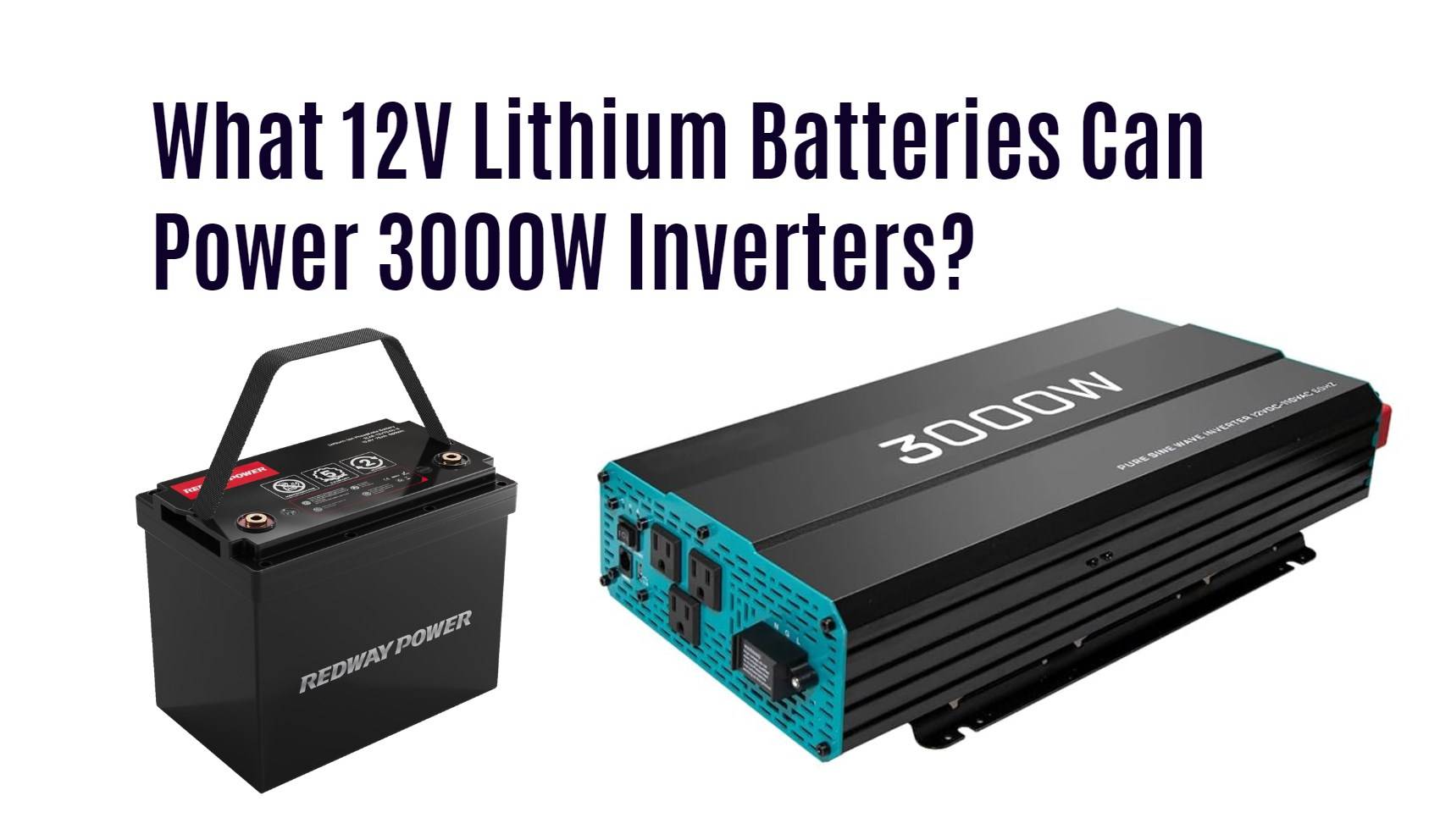
Blog
What 12V Lithium Batteries Are Suitable for Powering 3000W Inverters?

To power a 3000W inverter effectively, selecting the right 12V lithium battery is crucial. Typically, a configuration of multiple lithium batteries is required to meet the power demands efficiently. Understanding power requirements, configurations, and brand options will help ensure reliable performance.
What are the power requirements for a 3000W inverter?
A 3000W inverter requires a significant amount of power to operate efficiently. The actual input power needed from the batteries can exceed 3000 watts due to inverter inefficiencies, usually around 10%. Therefore, to supply 3000 watts, your battery system must provide approximately 3,333 watts.
Chart: Power Calculation for a 3000W Inverter
| Output Power (Watts) | Efficiency (%) | Input Power Required (Watts) |
|---|---|---|
| 3000 | 90 | ~3,333 |
How do you determine the right battery capacity for a 3000W inverter?
To determine the appropriate battery capacity, you need to consider both the load and how long you want to run the inverter. The formula to calculate amp-hours required from your battery is:
For example, if you want to run a 3000W inverter at full load for 1 hour, using a 12V system:
Chart: Battery Capacity Calculation Example
| Load Duration (Hours) | Input Power (Watts) | Required Amp-Hours |
|---|---|---|
| 1 | 3333 | ~278 |
| 2 | 3333 | ~556 |
| 3 | 3333 | ~834 |
What configurations of 12V lithium batteries can power a 3000W inverter?
To effectively power a 3000W inverter using 12V lithium batteries, several configurations can be employed:
- Single Battery Configuration: A single 12V lithium battery with at least 280Ah capacity can theoretically handle short bursts but is not practical for continuous use.
- Multiple Batteries in Parallel: To achieve higher capacity, connect multiple 12V lithium batteries in parallel. For example:
- Using three 100Ah batteries would provide 300Ah, sufficient for approximately one hour at full load.
- Alternatively, using two 200Ah batteries would also meet this requirement.
- Series Connection: If higher voltage systems are acceptable, consider connecting four 12V batteries in series to create a 48V system, which would be more efficient with fewer amps drawn.
Chart: Battery Configuration Options
| Configuration Type | Number of Batteries Needed | Total Capacity (Ah) |
|---|---|---|
| Single Battery | 1 x 280Ah | ~280 |
| Parallel Configuration | 3 x 100Ah | ~300 |
| Series Configuration | 4 x 12V (48V system) | Varies by Ah rating |
How does inverter efficiency impact battery selection?
Inverter efficiency significantly affects how much energy your batteries need to supply. Most inverters operate at around 90% efficiency, meaning they draw more power than they output.When selecting batteries:
- Calculate based on actual input requirements.
- Consider using higher-capacity batteries or multiple units to ensure adequate supply without over-discharging.
Chart: Impact of Efficiency on Battery Selection
| Output Power (Watts) | Efficiency (%) | Input Power Required (Watts) |
|---|---|---|
| 3000 | 90 | ~3,333 |
| Required Amp-Hours |
What are the best brands of 12V lithium batteries for this application?
Several brands offer high-quality 12V lithium batteries suitable for powering a 3000W inverter:
- Battle Born Batteries: Known for their durability and long cycle life.
- Renogy: Offers reliable options with good performance metrics.
- SOK Battery: Provides cost-effective solutions with solid specifications.
- LiTime: Known for their high-capacity offerings and excellent customer service.
Chart: Brand Comparison of Lithium Batteries
| Brand | Capacity Options | Cycle Life | Warranty |
|---|---|---|---|
| Battle Born | Up to 100Ah | ~5,000 | Lifetime |
| Renogy | Up to 200Ah | ~4,000 | 5 years |
| SOK | Up to 206Ah | ~4,000 | 5 years |
| LiTime | Up to 100Ah | ~15,000 | Lifetime |
Industrial News
The demand for high-capacity lithium batteries continues to grow as more consumers and businesses seek reliable energy storage solutions. Recent advancements focus on improving energy density and reducing costs while enhancing safety features. Brands like Battle Born and Renogy are leading the way in developing innovative products that cater specifically to high-wattage applications like powering inverters.
Redway Power Insight
“When choosing a battery system for high-demand applications like a 3000W inverter, it’s essential to consider not just capacity but also brand reliability and warranty terms,” states an industry expert. Investing in quality lithium batteries can significantly enhance performance and longevity.
FAQ Section
Q1: How many amp-hours do I need for a 3000W inverter?
A1: You typically need at least 278Ah at 12V to run it effectively for one hour.Q2: Can I use lead-acid batteries instead?
A2: Yes, but you will need significantly more capacity and weight compared to lithium options.Q3: Is it better to connect batteries in series or parallel?
A3: It depends on your voltage requirements; series increases voltage while parallel increases capacity.Q4: How do I ensure my battery lasts longer?
A4: Avoid deep discharges and keep them within recommended charge levels.Q5: Are there specific brands recommended for high-performance applications?
A5: Brands like Battle Born, Renogy, SOK Battery, and LiTime are highly regarded in this space.



